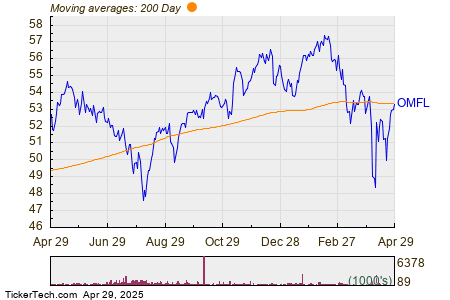Nvidia’s Dominance in Data Center Sales Amid Economic Concerns
Nvidia (NASDAQ: NVDA) has swiftly transformed from a lesser-known semiconductor firm to a prominent player in the market. This growth is primarily fueled by its remarkable increase in data center sales, which have surged as technology companies invest heavily in cutting-edge artificial intelligence (AI).
The latest analysis from The Motley Fool highlights Nvidia’s leading position in data center revenue, reporting $35.5 billion in the fourth quarter of 2024. In comparison, Nvidia’s nearest competitor in this sector, International Business Machines, achieved only $4.2 billion in data center sales during the same timeframe.
However, investors are left questioning the stability of Nvidia’s key revenue stream amidst potential economic slowdowns and President Donald Trump’s tariffs. Below is an overview of factors investors should monitor closely.

Image source: Getty Images.
The Importance of Data Center Revenue for Nvidia
Nvidia’s data center processor sales represent a crucial part of its business. Here are some key statistics:
- Nvidia’s data center revenue skyrocketed by 884% between Q4 2022 and Q4 2024.
- Data center sales contribute to 88% of the company’s total revenue.
- In 2024, data center sales alone surged by 142%.
While Nvidia does not disclose gross margin figures for individual revenue segments, most of its substantial 75% gross margin comes from data centers, highlighting the segment’s profitability. In fact, Nvidia reported adjusted earnings of $2.99 per share last year, a 130% increase from the preceding year.
Major technology companies, including Amazon, Alphabet, Microsoft, and Meta Platforms, have utilized Nvidia’s processors in their data centers, reflecting a global demand for its technology.
“Countries worldwide are establishing their AI ecosystems as demand for computational infrastructure escalates,” said Nvidia Chief Financial Officer Colette Kress during a recent earnings call.
Monitoring Tariffs and Potential Funding Cuts
Currently, semiconductors are exempt from Trump’s tariffs, but this could change. The administration has announced it is reviewing potential tariffs on semiconductors. In response, Nvidia has decided to shift the manufacturing of its Blackwell processor, its flagship chip, to the U.S., though this transition may take 12 to 15 months.
Despite the exemption, uncertainties surrounding tariffs remain a concern, particularly as new tariffs could be announced at any time. Nvidia’s transition to U.S.-based manufacturing will not be immediate.
Investors should also be aware that some technology firms have recently reduced their data center expenditures. Concerns about tariffs leading to a possible recession have prompted moves by some tech giants to cut costs. For instance, Microsoft has paused a $1 billion data center project in Ohio, and Amazon has temporarily halted certain data center leases in Europe. However, it is noteworthy that these companies are still committed to investing in AI to maintain competitive advantage, suggesting that major reductions in AI data center investments are unlikely.
This context suggests that Nvidia’s data center growth should continue for the time being. Nevertheless, investors must keep a close watch on developments related to tariffs and the broader economy. Should additional spending cuts be announced or if the U.S. enters a significant recession, Nvidia’s lucrative data center revenue might decline.
The views and opinions expressed herein are the views and opinions of the author and do not necessarily reflect those of Nasdaq, Inc.




